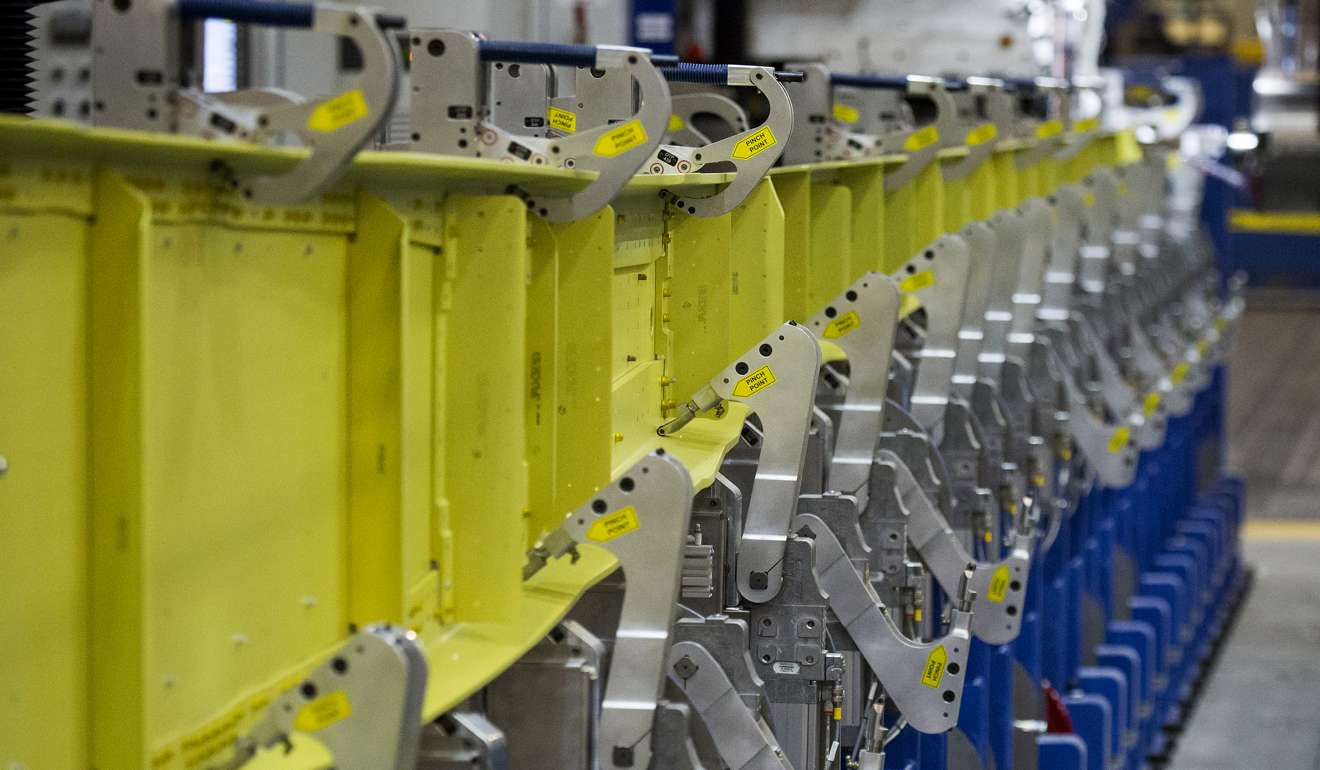
US economy leaps higher, setting stage for Fed raising rates
US retail sales rose more than expected in January and consumer prices recorded their biggest gain in nearly four years, boosting prospects of an interest rate increase from the Federal Reserve next month.
The economy’s strengthening outlook was bolstered by other data on Wednesday showing manufacturing and mining production rising last month as the drag from lower oil prices fades. The reports came as Federal Reserve Chair Janet Yellen appeared to put a March interest rate hike on the table.
“All things consumer show the economy is starting the year off with a bang,” said Chris Rupkey, chief economist at MUFG Union Bank in New York. “Interest rates are too low and with an economy this strong rates need to be put on a preset course higher.”

The Commerce Department said retail sales increased 0.4 per cent last month, buoyed by purchases of electronics and appliances. Households also spent more on dining out, sporting goods and hobbies.
December’s sales were revised up to show a 1.0 per cent rise instead of the previously reported 0.6 per cent advance. Sales rose despite motor vehicle purchases posting their biggest drop in 10 months.
Compared to January last year retail sales were up 5.6 per cent. Excluding automobiles, gasoline, building materials and food services, retail sales increased 0.4 per cent after a similar gain in December.
These so-called core retail sales correspond most closely with the consumer spending component of gross domestic product. Economists polled had forecast retail sales ticking up 0.1 per cent and core sales gaining 0.3 per cent last month.

In the wake of the data financial markets were pricing in a 27 per cent chance of an interest rate hike at the Fed’s March 14-15 policy meeting, up from 18 per cent late on Tuesday, according to CME Group’s FedWatch programme.
The dollar briefly rose to a one-month high versus a basket of currencies on the data, before surrendering gains to trade marginally lower. Prices for US government bonds fell, while Wall Street extended its record-setting run for a fifth day.
In a separate report, the Labor Department said its Consumer Price Index jumped 0.6 per cent last month as households paid more for gasoline, new motor vehicles, airline fares and clothing. It was the largest increase since February 2013 and followed a 0.3 per cent gain in December.
In the 12 months through January, the CPI increased 2.5 per cent, the biggest year-on-year gain since March 2012. The CPI rose 2.1 per cent in the year to December. Inflation is trending higher as prices for energy goods and other commodities rebound in response to a pick-up in global demand.
The Fed has a 2 per cent inflation target and tracks an inflation measure which is currently at 1.7 per cent.
Strengthening domestic demand together with firming inflation and a tightening labour market could allow the Fed to raise interest rates at least twice this year.
Testifying before lawmakers on Wednesday, Yellen reiterated that it would be “unwise” for the US central bank to wait too long to raise interest rates.
The US central bank has forecast three rate increases this year. The Fed hiked its overnight interest rate last December by 25 basis points to a range of 0.50 per cent to 0.75 per cent.

Despite January’s strong inflation and retail sales reports, many economists only expect two rate hikes in 2017.
“Recent rhetoric from Fed officials has turned marginally more hawkish lately. We still think March is too early for them to hike, particularly given their propensity to prepare markets for a move,” said Michael Feroli, an economist at JPMorgan in New York. “We continue to look for two hikes this year.”
A third report from the Fed showed manufacturing production increased 0.2 per cent in January after a similar rise in December. Output at mines shot up 2.8 per cent, with oil and gas well drilling increasing further.
While the reports on Wednesday suggested the economy regained momentum early in the first quarter, rising inflation means households have less spending power. Average hourly earnings adjusted for inflation fell 0.5 per cent in January and were unchanged from a year ago.
“This is not the best thing in the world for lower income households living paycheck-to-paycheck,” said Chris Christopher, an economist at IHS Global Insight in Lexington, Massachusetts.
Still, Christopher said an improving labour market would support relatively robust consumer spending. “Household finances are in good shape, thanks to gains in both home prices and stock prices, along with debt deleveraging,” he added.

